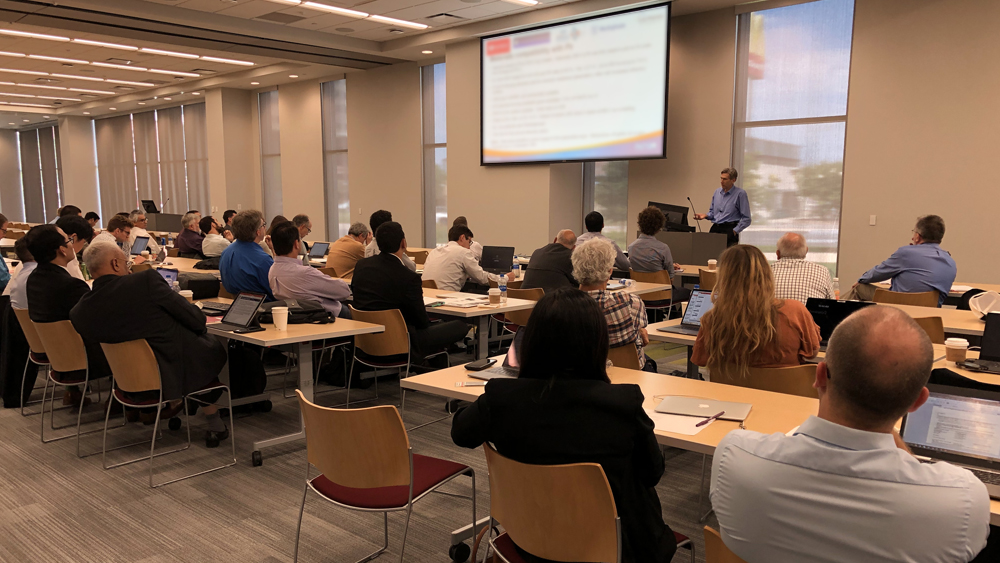
On June 25, 2019, Dr. Sean McDeavitt, director of the Nuclear Engineering and Science Center, hosted the first Experimenters Integration meeting at Texas A&M University. This meeting was attended by approximately 85 contributors from across five different Department of Energy (DOE) laboratories, 20 universities and seven industry partners. The focus of the meeting was information sharing in order to build stronger collaborations across the suite of the Versatile Test Reactor (VTR) Experiment program.
For the last 23 years, the U.S. has not had a fast reactor-based neutron source. Such a neutron source is the cornerstone of the country’s ability to accelerate the development and testing of advanced materials and fuels by testing them in high fast-neutron fields with representative environments.
“The reason this whole effort is important is because the reactor itself is intentionally traditional in design and is actually fairly simple. However, the experiments that are conducted in the reactor can be quite complex and can influence the design of the reactor and the reactor facility,” said John Bumgardner, resumption of transient testing director at the Idaho National Laboratory (INL).
Bumgardner went on to explain that while this reactor is a sodium fast reactor, he can actually use it to do fuels testing qualification for many other reactor types. This testing capability is essential for the U.S. to modernize its nuclear energy infrastructure for developing transformational nuclear energy technologies. A modern, domestic test reactor capability is needed for the advanced reactor community in the U.S. to achieve its goals regarding cost reduction, long-lived structures, and cladding materials and fuels that can withstand extreme environments.
“I want people to understand how crucial this project really is to the advancement of nuclear in general,” said Kevin Weaver, VTR experiment manager and technical lead at INL. “There are things that we will learn out of it that we’re not even thinking of right now.”
Weaver likened their research and various collaborations to the faith people place in NASA missions. “There’s so much work and preparation that goes into it, and there is no way to know what we’re going to get out of it. But if you think forward—even just a few years ahead—this work could drastically change the landscape. That’s a big deal.”
This Experimenters Integration meeting aimed to provide an overall framework of the whole project to the people on the experiment team. The meeting was also an opportunity to hear from research teams in order to understand what their progress has been and what their needs are in order to move forward.